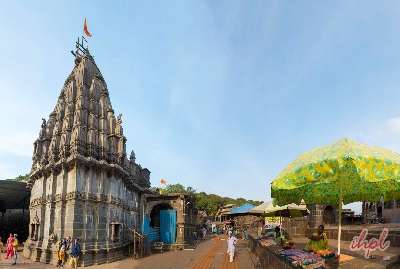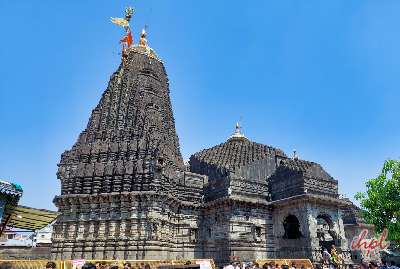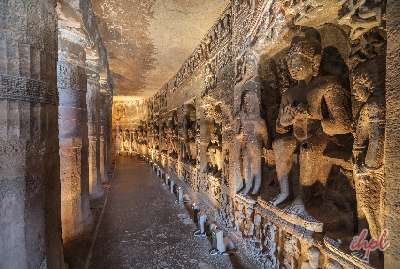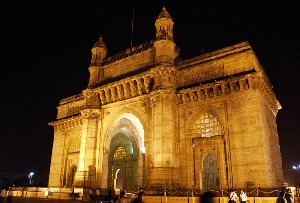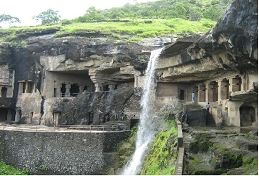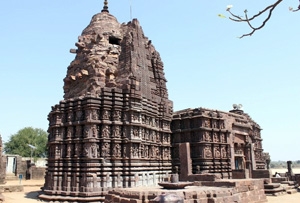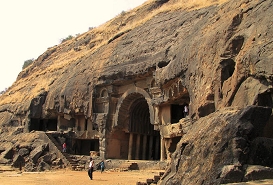One of India’s most famous UNESCO World Heritage Sites, Ellora Caves, is also known as Verul. These are a group of Hindu, Buddhist, and Jain caves. They date back to the 6th and 10th centuries. These stunning artificial monolithic cave temples were carved during the rule of the Kalachuri, Rashtrakuta, and Chalukya dynasties. UNESCO inscribed the heritage site in 1983. There are a total of 34 cave temples. These comprise 17 Hindu, 12 Buddhist, and 5 Jain caves and are proof of the religious harmony prevalent in those times. Extending over 2 km, these caves display architectural marvels of ancient India.
Ellora Caves History
It is believed that the Ellora caves in Aurangabad were carved out from the vertical side of the Charanandri hills between the 6th century and the 10th century. History states that after the Ajanta Caves, which are located 100 km north-eastwards, were deserted, the carving work of these caves started around 550 AD. It is said that the estimated dates of the caves coincide with the timing of the decline of Buddhism in India and the reinstatement of Hinduism.
Explore 5 Days Maharashtra Wildlife Package.
The Chalukya and Rashtrakuta rulers were great patrons of the Brahmanical movement, under whose rule most of the work of Ellora caves was done, including the most popular 7th century Kailasa temple. A set of caves was built during the 10th century. This was when the local rulers converted from Shaivism (the followers of Lord Shiva) to the Digambara sect of Jainism. The prime reason these caves are on the UNESCO list is the religious harmony displayed here.
Archaeologists state that these caves were carved out by the basalt volcanic eruptions that occurred some 65 million years ago. This lava flow formation came to be known as the “Deccan Trap’ and has a way to these caves that were peculiar to Deccan topography.
Temples
Kailasa Temple
Also known as Kailasnath Temple, Kailasa Temple is Ellora’s main attraction. It is the largest rock-cut cave made from a single rock. The wonderful Dravidian style of architecture dedicated to Lord Shiva was completed in about 150 years.
The Kailasa temple has a U-shaped courtyard where you can see structures of god and goddess on the sculpted side panels. In the central square, there is also an idol of the Nandi bull in front of the Shiva Lingam. Another brilliant idol is of Ravana, lifting Mount Kailash with Goddess Parvati and Lord Shiva seated on a throne.
Caves
Ellora caves can be segregated into:
Buddhist Caves: Dating between the 5th and 7th centuries, the Buddhist caves are the earliest ones in the group. These caves have monasteries, along with other structures like living spaces as well as kitchens for the monks, made from hill-rocks.
Hindu Caves: Carved at the start of the 7th century, the Hindu caves are equally incredible. These cave complexes have beautiful designs and are a great piece of planning with great implementation.
Jain Caves: Though not as massive as the other two caves, the Jain caves are an incredible display of Jain religious philosophy. Elaborate artwork is the highlight of these caves.
If you are planning to visit Ellora Caves, then you must check out our Aurangabad tour packages.
Check out our packages: Maharashtra Tour Packages, Aurangabad Tour Packages, Khandala Tour Packages, Shirdi Tour Packages, Mumbai Tour Packages, Pune Tour Packages, Mahabaleshwar Tour Packages.
Aurangabad Tour Packages




